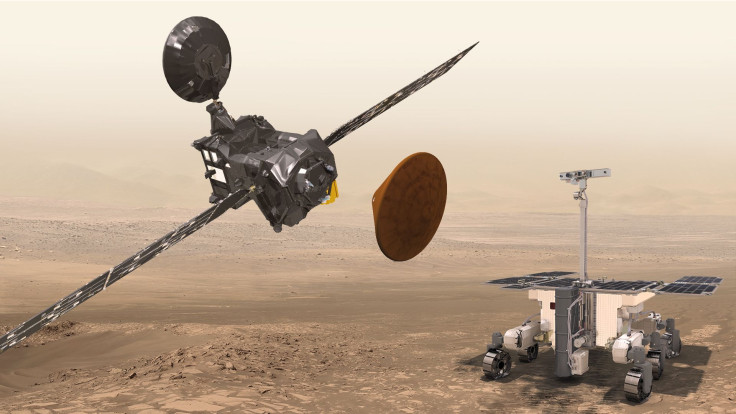ESA’s ExoMars On Course For October 19 Rendezvous With The Red Planet

ExoMars — a spacecraft sent to Mars in the first phase of a joint mission by the European Space Agency and Russia’s Roscosmos — is on course for its rendezvous with the red planet. The spacecraft, which consists of the Trace Gas Orbiter (TGO) and the Schiaparelli entry, descent and landing demonstrator, will enter into orbit around the red planet Oct. 19, the ESA said Friday.
Even before the TGO is placed in orbit, the Schiaparelli module will detach on Oct. 16, entering the atmosphere for a six-minute descent to the Meridiani Planum region — an area of Mars close to the equator that is relatively flat and smooth — also on Oct. 19.
“Schiaparelli’s operations are governed by time-tagged stored commands, ensuring that the lander can conduct its mission even when out of contact with any of the Mars orbiters that will serve as data relays,” the ESA, which uploaded the commands that will govern Schiaparelli’s descent and touchdown to the ExoMars spacecraft earlier this week, said in a statement. “Automated operation also ensures that the lander will revive from its power-saving sleep periods on the surface in time for communication links.”
The TGO and the Schiaparelli landing module, togther comprising the first phase of the ExoMars mission, were launched from the Baikonur Cosmodrome in Kazakhstan in March. While the TGO will study the planet’s atmosphere from orbit — the study will last at least until 2022 — Schiaparelli’s task is much more daunting, landing on the surface of a planet whose thin atmosphere provides barely any aerodynamic drag.
In order to carry out this perilous task successfully, a radar will begin monitoring Schiaparelli’s height and when it is just six feet from the Maritan surface, the lander will briefly hover before cutting its thrusters, leaving it to fall freely.
“It [Schiaparelli] will test a range of technologies to enable a controlled descent and landing on Mars in preparation for future missions, including a heatshield, a parachute, a propulsion system and a crushable structure,” the ESA said. “Schiaparelli also carries a small science package that will record the wind speed, humidity, pressure and temperature at its landing site, as well as obtain the first measurements of electric fields on the surface of Mars that may provide insight into how dust storms are triggered.”
However, the second phase of the mission, which aims to land a rover on Mars, is facing funding issues. As a result, its launch date has now been pushed back to 2020 from its original target of 2018.
So far, four rovers — Sojourner, Sprit, Opportunity and Curiosity, all sent by NASA — have successfully landed on Mars. Opportunity and Curiosity are still operational.
© Copyright IBTimes 2025. All rights reserved.






















